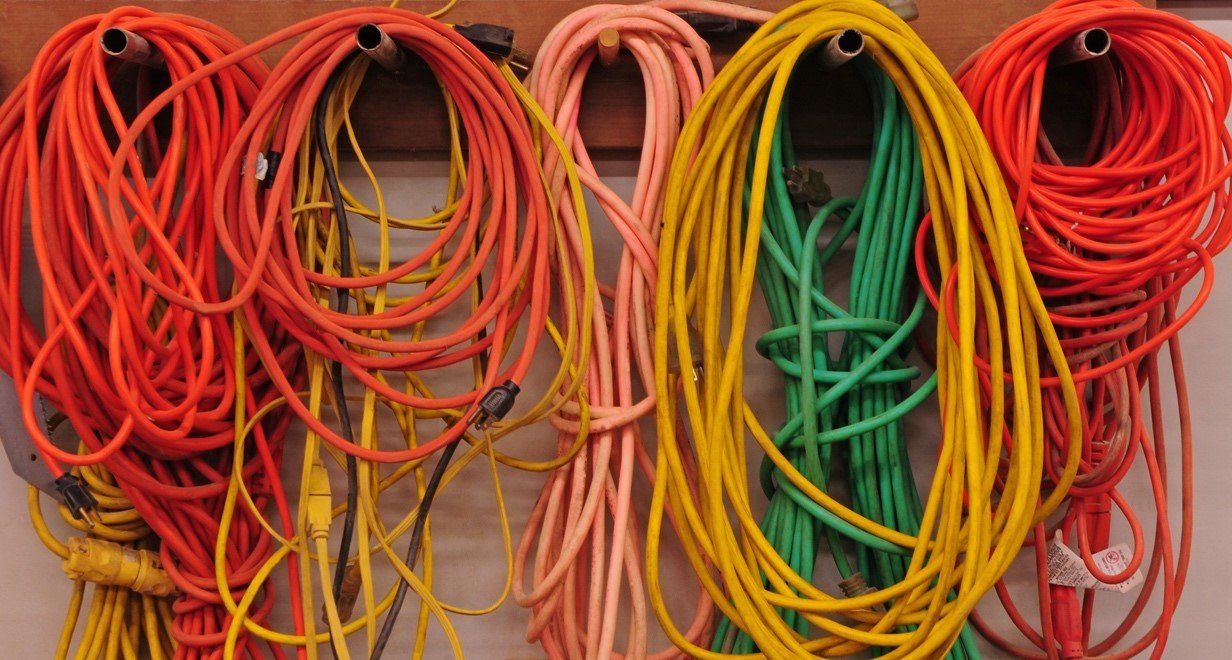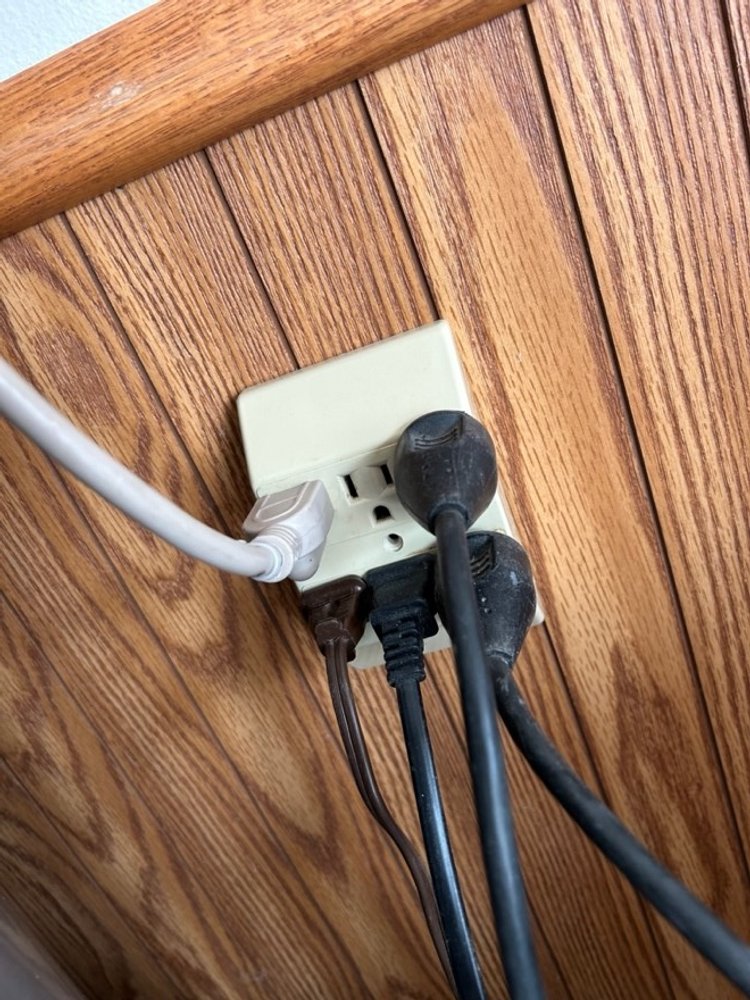My home inspector called out the use of extension cords as permanent wiring on my home inspection report. This seems like a bit of a stretch as far as defects go, but we see overuse and improper use of extension cords at home inspections more than you would think.
Variety of extension cord sizes and lengths
We see extension cords used a lot in utility rooms and garages where there may be just one or two outlets. That may have been adequate when the home was built, but now your utility room has a power vent water heater, a water softener, a wireless router, a modem, and the washing machine. Hey, they have these fancy adapters, so why not use them? Just use an extension cord and plug everything in.
Our home inspectors see power strips plugged into extension cords with multiple devices plugged into them. In older garages, a homeowner may run an extension cord up to the ceiling with a power strip attached, with both garage door openers plugged into the power strip.
Multiple cords plugged into duplex with a 6-plex adapter
Every year in this country, there are around 3300 fires in homes due to the use of extension cords. Of these 3300 fires, around 50 people were killed, with another 270 injured. Improper use of extension cords can cause them to overheat, resulting in a fire.
Extension cord safety guidelines
· Avoid plugging extension cords together. Use an appropriate length to get to where you have to go.
· Extension cords are for temporary use only. Do not use them in place of permanent wiring.
· Confirm the proper extension cord ratings. Don’t use indoor-rated extension cords outdoors.
· Make sure that the extension cord is rated for the required power needs.
· Outdoor extension cords should be free of snow and standing water.
· Have additional outlets installed in areas where you rely on extension cords to meet your power needs.
· Always inspect extension cords for damage before using them.
· Do not use extension cords that are missing their ground prong. Sometimes people cut the ground plug so they can use a 2-prong outlet.
· Do not staple, nail, or otherwise secure power cords to walls, ceilings, rafters, baseboards, etc.
· Do not run extension cords under rugs or carpet, through walls or floors, or into attic spaces through the ceiling.
· Extension cords without independent safety ratings should be discarded.
· Do not use extension cords for auxiliary heaters. They draw a lot of power and may cause the cord to overheat.
· Make sure you are not using interior extension cords for outdoor use.
· Follow safety protocol when using extension cords outdoors
Amperage limits for extension cords
Always choose an extension cord that meets your needs. There is no use dragging out a 100-foot extension cord if you only need 25 feet. Ensure that the cord you use will handle the amperage needs for the task at hand. Using a 100-foot 16-gauge cord for an air compressor that draws 20 amps may result in overheating and damage to the extension cord, not to mention the potential for fire. Below are some guidelines for choosing an extension cord:
· 25- to 50-foot extension cords
16 Gauge (1-15 Amps)
14 Gauge (14–15 Amps)
12 Gauge (16–20 Amps)
· 50- to 100-foot extension cords
16 Gauge (1–10 Amps)
14 Gauge (11–13 Amps)
12 Gauge (14–15 Amps)
10 Gauge (16–20 Amps)
· 100- to 150-foot extension cords
14 Gauge (1–7 Amps)
12 Gauge (8–10 Amps)
10 Gauge (11–15 Amps)
Summary
Extension cords are handy and safe when used properly. Unfortunately, they can sometimes become a permanent solution due to the lack of adequate outlets in garages, utility rooms, or outdoors.
When performing a home inspection, our home inspectors are on the lookout for extension cords used as permanent wiring. At HomePro Inspections, our home inspectors are trained to inspect all areas of the home. Any issues found are documented in your home inspection report and recommended for resolution by a qualified professional.
Visit our website to learn more or to schedule your home inspection in the Rochester, Owatonna, and Faribault, MN areas. You can contact us today at (507) 202-8942 or utilize our online “Schedule Now” feature to set up an appointment.



